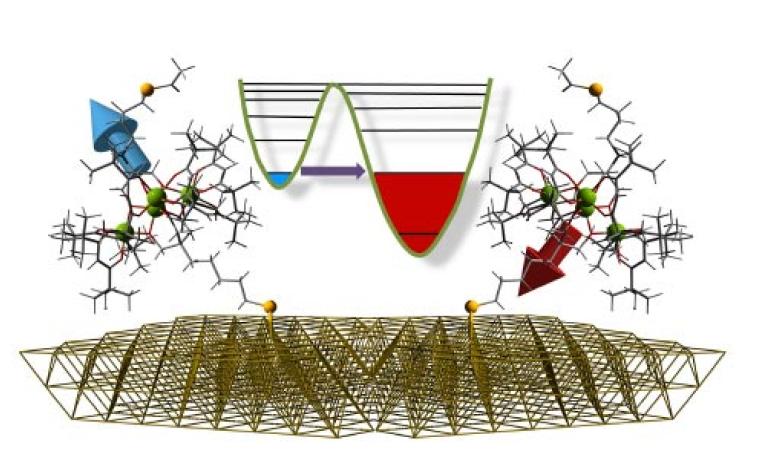When molecules become magnets –Roberta Sessoli alla giornata informativa dedicata all'ERC
Many of the electronic gadgets we currently take for granted already use ‘spintronics’ – for instance, the high-capacity hard disks that we find in today’s laptops. With the help of her ERC funding, Professor Roberta Sessoli is advancing our knowledge of the fundamental properties of molecular magnets and quantum spin, research which may lead to new molecular spin-based technologies. Prof Sessoli will attend the conference ERC – 5 years of achievement and the Italian National Information Day on the ERC funding schemes in Rome on 25 June 2012.

‘Spin’ is a concept emerging from quantum physics – particles such as electrons have a ‘quantum spin’, an angular momentum that is impossible to visualise from our non-quantum point of view. An electron’s spin is part of its unique quantum state; without it we would not have the different elements with their characteristic properties, as laid out in the periodic table.
Electron spin also produces a tiny magnetic field which, when aligned among many electrons, results in the magnetic forces we know so well. “These magnetic forces – ‘attraction without contact’ – have been fascinating to humans throughout history,” explains Prof Sessoli. “My own specialisation concerns the possibility that single molecules have magnetic memory. This was not foreseen by the state of knowledge on magnetism just 20 years ago.”
The breakthrough was the discovery that just a few atoms together can behave like a magnet – resulting in ‘Single-molecule magnets’ (SMMs), or ‘molecular nanomagnets’. “We are now investigating how to manipulate a single ‘bit’ of information stored in a single molecule,” says Prof Sessoli.
When chemistry meets physics
Although the magnetism of Single-molecule magnets is a physical property at the nanoscale, SMMs are created by following a chemical ‘recipe’ at the human scale – mixing the right ingredients in the right order and under the right conditions of temperature, pressure, etc.
“There are so many parameters to get right at the same time, in order to observe the memory effect in a molecule,” explains Prof Sessoli. This is why the multi-disciplinary approach of Prof Sessoli's MOLNANOMAS project is so important. “A huge range of skills are needed,” she says.
For instance, expertise in chemistry enables the design of molecules that can self-organise and self-assemble on to flat surfaces, or ‘substrates’. In this way, molecules can be organised into circuits. “Fundamental physics researchers can thus investigate the unexplored areas where the quantum world of magnetic molecules is on ‘speaking terms’ with the large-scale world of the substrate. They can collaborate with chemists to tune the interaction between the molecule and the substrate.”
Fundamental research can “introduce a bug” into our understanding and lead to fresh questions, according to Prof Sessoli. Indeed, the project has already published a new paper in the prestigious journal Angewandte Chemie which has generated new questions for scientists to pursue.
Basic science for breakthrough technology
“Our ERC funding is very important in helping to transfer my background in magnetism and molecular chemistry to the field of surface science,” acknowledges Prof Sessoli. ERC support also helps with the huge technical challenge of measuring molecular magnetism against the background of a much larger substrate. This often needs very low temperatures and the use of large-scale facilities such as a ‘synchrotron’ – a type of particle accelerator.
“Our work is highlighting quantum phenomena that are becoming ever-more important to electronics as storage miniaturisation progresses,” says Prof Sessoli. “By accumulating basic scientific knowledge we can generate a breakthrough or big jump in technology.”


